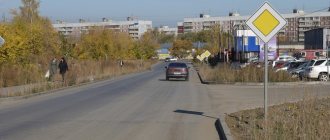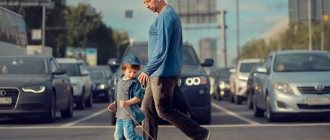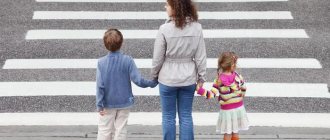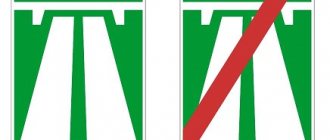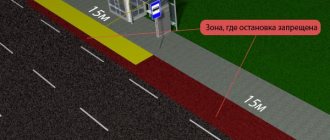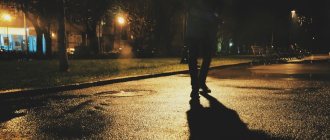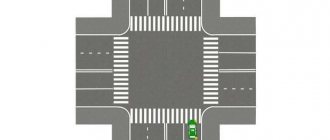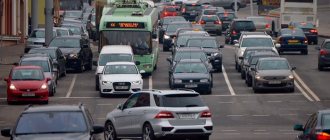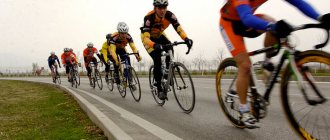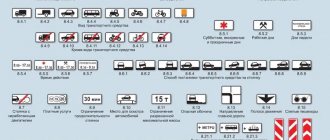Who is a road user?
This is an individual involved in the events taking place on the track.
Driver
He is given the greatest responsibility and a list of requirements to be fulfilled. The driver of the vehicle is the main participant in the movement. The professional skill of the driver and his skills play a key role in the safety of road traffic.
There are different categories:
- Vehicle driver. This role is given special attention, since most of the points in laws and traffic regulations are related to driving (for example, “General duties of the driver”). However, there are slight inaccuracies in the definition of the term. If a person gets out of the vehicle when a traffic police officer stops a car, he will cease to be a driver.
- Animal driver. The herd crossing the road is also a participant in the DD. Therefore, when moving across the highway, the animals must be accompanied by a shepherd.
- Instructor. He bears full responsibility for the actions of the student behind the wheel.
Passenger
Many vehicles are designed to transport people. This means that passengers are participants in the DD. These are persons, with the exception of drivers, who are in the vehicle.
It is a mistake to think that they are not affected by traffic regulations. Since these are also participants in the movement, if the rules are not followed, a person may be held accountable.
A pedestrian
This is a person who is on or near the road and is not doing any work. Pedestrians are the most problematic category of DD participants due to the formation of the incorrect attitude that they are always right. A third of accidents happen due to their fault.
Traffic regulations 1.2.
Driver A person who drives a vehicle, a driver who leads pack animals, riding animals or a herd along the road. A driving instructor is treated like a driver. Cyclist A person who rides a bicycle. Passenger A person, other than the driver, in or on a vehicle, as well as a person who enters or boards a vehicle, or exits or dismounts a vehicle. Pedestrian A person who is outside a vehicle on a road or on a pedestrian or bicycle path and does not work on them. Pedestrians include persons moving in wheelchairs without a motor, driving a bicycle, moped, motorcycle, carrying a sled, cart, baby stroller or wheelchair, as well as using roller skates, scooters and other similar means for movement. Road participant A person directly involved in the movement process as a driver, pedestrian, or passenger of a vehicle. Road traffic The set of social relations that arise in the process of moving people and goods with or without vehicles within the boundaries of roads. Traffic controller A person vested in the prescribed manner with the authority to regulate traffic with the help of signals established by the SDA - Traffic Rules, and who directly carries out the said regulation. The traffic controller must be in uniform or have a distinctive sign and equipment. Traffic controllers include police officers and military automobile inspectors, as well as employees of road maintenance services, those on duty at railway crossings and ferry crossings when performing their official duties.
What rights do persons involved in road traffic have?
Drivers, passengers and pedestrians can legally receive:
- Compensation for losses due to non-compliance with standards of road facilities and the road itself.
- Free emergency assistance in case of road accidents from healthcare workers.
- Correct information about the quality of services and facilities related to safety on the highway.
Drivers, pedestrians and passengers must study traffic rules. They can also file a complaint to be reviewed for misconduct by officials directly related to traffic on the highway.
Where pedestrians are and are not allowed to walk
Based on clause 4.1 of the DD rules, we can draw the following conclusions about how pedestrians can move:
- along paths for pedestrians and dismounted cyclists;
- on sidewalks;
- along the side of the road, if the mentioned zones are not in the field of view;
- along the roadway, away from active traffic, if there are no other, safer options nearby.
Bike and pedestrian paths should not be confused with paths for cyclists. Cycle and pedestrian paths are an area for cyclists who walk and drive a bicycle nearby (signs 4.5.2–4.5.7), and cycling directly takes place on the bicycle path (4.4.1).
Accordingly, pedestrians are not allowed to walk in a bicycle zone, on a road if alternative, safer options are available, or on tram and railway tracks. In short, pedestrians are not allowed to walk anywhere where they could become an obstacle to traffic.
Safety rules and culture of road users
Most drivers and pedestrians avoid difficult situations on the highway. Everyone must clearly understand and realize that the highway is a high-risk area. Not only their lives, but also those around them depend on the behavior of road users.
Some rules of safety and culture of traffic police, which are considered the basis of interaction between drivers:
- To express your gratitude to another, you need to blink your headlights.
- If a person sees a danger in front of him that is hidden for those driving behind, it is recommended to turn on the hazard lights and press the brake pedal several times.
- When another motorist does not close the trunk or door properly, you need to honk at him and point your hand at an element of the car.
- If at night the headlights of an oncoming vehicle are blinding, you need to switch from low beam to high beam.
You should always focus on the car driver’s turn signal if the driver is a cyclist or pedestrian. The latter must also follow all the rules, for example:
- Movement occurs on the sidewalk or along paths. If there are none, then move in 1 row along the side of the road or the edge of the roadway.
- For conflict-free participation in traffic accidents, a pedestrian must walk in specially designated places, and towards vehicles.
- You cannot jump onto the roadway and run across it.
If a person is a passenger, do not forget the following rules:
- Wait for the vehicle in specially designated areas.
- Board the vehicle after the vehicle has come to a complete stop.
- Do not lean on the door under any circumstances, as it may open at any moment.
These rules will help instill the skills of safe participation in road traffic among those involved in it.
Basic rights of pedestrians
The responsibilities and rights of pedestrians are clearly regulated by the Road Traffic Rules (hereinafter referred to as traffic rules).
The rights of persons traveling without the use of a vehicle include:
- Priority in crossing roads with active traffic along specially marked lines.
- Crossing the roadway, railway tracks, streets (perpendicular to the opposite side), provided that the road is visible without interference from both the right and left, and there are no markings or signs within the visibility radius that allow pedestrian movement.
- Requirement from higher authorities to ensure safe movement in places of active transport links.
In this case, pedestrians are obliged to:
- Move freely within the zebra crossing zone, along bicycle paths, sidewalks and roadsides. The rules allow you to stick to the side of the road in the absence of all the listed zones.
- At controlled crossings, follow the color signals of the traffic light or the traffic controller.
- Unless absolutely necessary, do not change the direction of the path, do not stop or linger when crossing a street, roadway or railway tracks.
- Do not move through active traffic outside a special crossing in the presence of a dividing strip (broadband road), as well as in areas where road or pedestrian restrictive signs are posted.
- Even in an area for pedestrians, give priority to vehicles equipped with flashing lights or emitting a loud sound signal.
- Do not leave the safe area if approaching vehicles have an obstruction to your vision.
In addition to the basic conventions, a person must follow public rules of behavior on the road so as not to provoke dangerous situations for all other road users.
Crossing the roadway
You need to remember that:
- You can't cross the road everywhere. It is necessary to find special places for this, for example, a zebra crossing, underground or overground passages.
- In places where there is a traffic controller, you must wait for the permission signal to cross the highway.
- It’s worth first seeing if there are cars and how far away they are before you start driving.
- Choose places from which you are crossing so that other traffic participants see the person and are ready to slow down if necessary.
Prohibitions
There are a number of restrictions that road users must comply with. These are prohibitions on driving a vehicle:
- In a state of drug, alcohol or other intoxication.
- Under the influence of medications that reduce attention and slow down reactions.
- In a tired or painful state.
In general, we can say that any road user should not appear on the roadway in such a state. Determination of driver intoxication is carried out using special technical means. A citizen who is drunk and driving is subject to administrative sanctions. If he violates it again, he faces criminal liability. It is not permitted to transfer control of a vehicle to a person in any of the above conditions. It must be remembered that everyone who gets behind the wheel and drives onto the roadway acts as a road user. Determining the legality of driving a vehicle by a particular citizen is carried out by the presence of a driver’s license. In the absence of an appropriate document, the person is recognized as a violator of the established requirements. Voluntary transfer of vehicles to subjects who do not have a driving license is not permitted. When moving in the roadway area, the driver is not allowed to cross columns (including those on foot) and take up space in them.
What can you count on in the roadway area?
While on the track, you need to be prepared for any development of events. For example:
- There are often traffic workers on the highway, which will require you to avoid obstacles.
- A person or animal may suddenly jump out, and you need to be prepared to take safety measures.
- When in a residential area, you should be especially careful. If the person is a driver, then reduce the speed. A pedestrian must take into account that the driver will not always have time to react to the sudden appearance of people on the road.
Additionally
At unregulated crossings, pedestrians are allowed to enter the road only after they have assessed the distance to the approaching vehicle and the speed of the vehicles. It is necessary to make sure that crossing the roadway will not pose a threat to their life and health. When crossing the road outside the marking zone, pedestrians should not interfere with the movement of vehicles. It is prohibited to step out from behind a static vehicle or other object that limits visibility without first making sure that there are no approaching vehicles. Upon entering the roadway area, a person should not linger or stop unless it concerns safety. If a vehicle approaches with blue signals or red and blue beacons on, as well as equipped with special sound, people crossing the area must stop and allow these vehicles to pass. Those planning to cross the roadway should refrain from driving. Waiting for a minibus or other regular vehicle is carried out at special stopping points. Such places are equipped with landing platforms raised above the roadway. If there are no such points, you can wait for transport on the side of the road or on the sidewalk.
Traffic controller signals
1. Arms lowered or extended to the sides:
- The movement of all pedestrians and vehicles from the back and chest is prohibited.
- It is allowed for people to cross the roadway, for trams to move straight and for trackless vehicles to move straight and to the right from the right and left sides.
2. A raised hand prohibits the movement of pedestrians and vehicles in all directions. The exception is the cases provided for in clause 6.14.
3. Right arm extended forward:
- Trams are allowed to move to the left, and trackless vehicles are allowed to move in all directions from the left side of the traffic controller.
- All vehicles are allowed to move only to the right from the chest side.
- All vehicles are prohibited from driving from the back and right side.
- People are allowed to cross the roadway behind their back.
The traffic controller can also give other signals with his hands that are understandable to pedestrians and drivers. For better visibility, use a disk with a red reflector or a rod.
Persons in the vehicle next to or behind the driver
Separate requirements are established for passengers. In particular, they must:
- When traveling in a vehicle equipped with seat belts, wear them. When riding a motorcycle, wear a fastened helmet.
- Board and disembark vehicles from the curb or sidewalk after the vehicle has come to a complete stop. It is allowed to carry out these actions from the side of the roadway if this does not pose a threat to traffic safety or hinder other participants.
Certain restrictions have been established for these persons. The passenger is prohibited from distracting the driver while he is driving the vehicle. It is not allowed to be on the sides or cargo above them when moving on a cargo vehicle, or to open car doors while driving.
